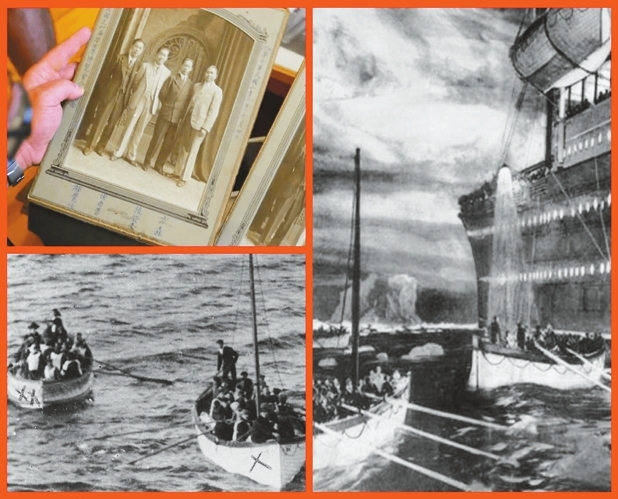

THE British passenger liner Titanic became known to many Chinese people thanks to a blockbuster film first screened in China in 1998. However, viewers at that time had no idea that the rescue of the heroine at the end of the movie was based on the real story of a Chinese survivor. That Chinese survivor might have been the last person to be saved, according to James Cameron, director of the movie “Titanic.” “And that became the inspiration for how Rose was saved,” he said in a trailer for “The Six: The Untold Story of RMS Titanic’s Chinese Passengers,” on which he served as executive producer. “The Six,” a documentary exploring the little-known history of how some Chinese passengers managed to survive after Titanic struck an iceberg, is to be screened in cinemas across China starting April 16, a day after the 109th anniversary of the legendary ship’s sinking. “This is a documentary that tells a totally new story about a totally new set of people who almost no one knew were on board Titanic before,” said British filmmaker Arthur Jones, director of the film. Arduous task Jones, 47, was born in a large industrial Yorkshire town in the north of England, and grew up near the home of an old woman believed to be a Titanic survivor. That experience planted a seed deep in his heart. In 1996, he moved to China where he has been living since, learning Mandarin and working on film projects. An opportunity came knocking several years ago when his friend Steven Schwankert, a scholar in marine history, told him about the Chinese survivors on Titanic, whose stories had never been told before. On April 10, 1912, Titanic, once the most luxurious ship in the world and often referred to as “unsinkable,” started out from Southampton in England to New York on its maiden voyage. Five days later, the ship sank to the bottom of the Atlantic Ocean. More than 1,500 people died. On the ship there were eight Chinese men who had previously worked on cargo ships traveling around Europe. They boarded the Titanic in England on a single ticket listing eight names, staying in the third-class cabin. They were on their way to a new job. Then disaster struck — and six of them made it out alive. Jones and Cameron started working on the project in 2015. The search for possible descendants, relatives and even neighbors of the survivors cost them about four or five years. “We did actually find more people we believe are descendants, but they were nervous about making such a big claim after all these years. We respected their privacy,” said the director. Overcoming rumors Jones could understand well why the Chinese descendants didn’t know much about the survivors. There had been rumors about how the Chinese survivors escaped. One of the claims was that they dressed as women in order to get onto the life boats. “Surviving Titanic was a very traumatic experience. Then ... the newspapers wrote some terrible stories about them. Perhaps they felt some shame connected to it,” said Jones. So several of the survivors chose not to tell their family, if they had one, what had happened to them. But during the past five years, the team managed to find new evidence about the escape of all six survivors, including that about what they had been actually wearing during the escape. “There is no evidence that they did anything wrong,” the director said. “So, how did they survive? They did it by pulling together.” Evidence suggests that the Chinese passengers worked as a group to escape from their cabin. They got to the boat decks early and waited there. One got onto a life boat relatively early on, and four others got on another later. The last survivor, known as Fang Lang, fell or jumped into the water. He seemed to have swum around for about 20 to 30 minutes before being pulled out by British officer Harold Lowe. After the disaster, the experience of the six survivors in the United States was not pleasant. The discriminatory Chinese Exclusion Act, which was in force at the time, meant they had to leave the country within 24 hours. One of them died within two years of the accident. Others ended up in different countries where it was very hard for them to settle down, start relationships or have children, in part because of discriminatory immigration laws. In the decades that have followed its tragic sinking, Titanic has been used as a lens through which each subsequent generation has examined the issues of their own time: duty, bravery, class, gender and, now more than ever, discrimination faced by migrants. Jones believes that lessons can still be learned today, especially at a time when the ship of the world is facing its own “iceberg”: COVID-19. “The story of different ethnic groups on Titanic seems an appropriate metaphor for how different countries and different peoples have reacted to each other in a time of crisis,” he said. He noted that the several hundred people on Titanic who ultimately survived the disaster, did so largely by sticking together. “When they did work together, as the Chinese and many others seem to have done, they survived in higher numbers.” It is also true for countries, he said. (Xinhua) | 
